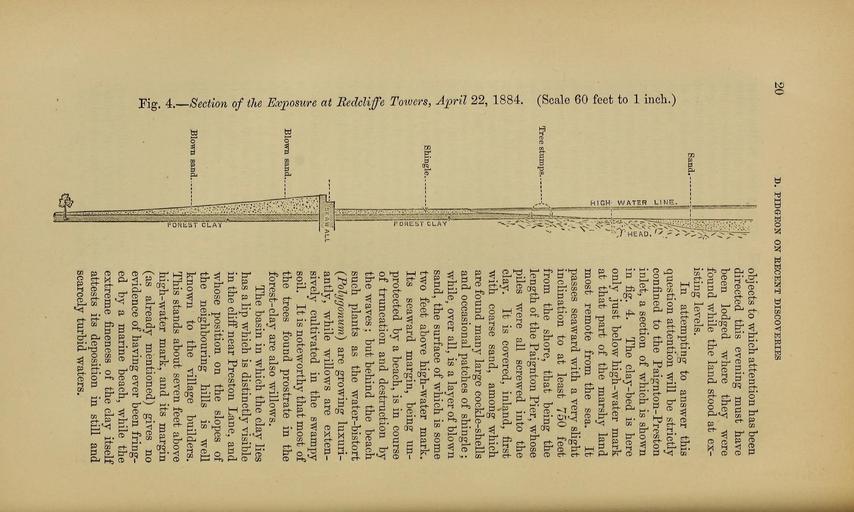MAKE A MEME
View Large Image

| View Original: | The_Quarterly_journal_of_the_Geological_Society_of_London_(13889759860).jpg (2016x1209) | |||
| Download: | Original | Medium | Small | Thumb |
| Courtesy of: | commons.wikimedia.org | More Like This | ||
| Keywords: The Quarterly journal of the Geological Society of London (13889759860).jpg 20 <br> D PrOGEON 01 EECEISTT DISCOYEEIES <br> CM <br> ˘ s <br> tf <br> S <br> I <br> Sand <br> Tree stumps <br> SMngle <br> l <br> Blown sand <br> Blown sand <br> objects to which attention has been <br> directed this evening must have <br> been lodged where they were <br> found while the land stood at ex- <br> isting levels <br> In attempting to answer this <br> question attention will be strictly <br> confined to the Paignton-Preston <br> inlet a section of which is shown <br> in fig 4 The clay-bed is here <br> only just below high-water mark <br> at that part of the marshy land <br> most remote from the sea It <br> passes seaward with a very slight <br> inclination to at least 750 feet <br> from the shore that being the <br> length of the Paignton Pier whose <br> piles were all screwed into the <br> clay It is covered inland first <br> with coarse sand among which <br> are found manj large cockle-shells <br> and occasional patches of shingle ; <br> while over all is a layer of blown <br> sand the surface of which is some <br> two feet above high-water mark <br> Its seaward margin being un- <br> protected by a beach is in course <br> of truncation and destruction by <br> the waves ; but behind the beach <br> such plants as the water-bistort <br> Polygonum are growing luxuri- <br> antly while willows are exten- <br> sively cultivated in the swampy <br> soil It is noteworthy that most of <br> the trees found prostrate in the <br> forest- clay are also willows <br> The basin in which the clay lies <br> has a lip which is distinctly visible <br> in the cliff near Preston Lane and <br> whose position on the slopes of <br> the neighbouring hills is well <br> known to the village builders <br> This stands about seven feet above <br> high-water mark and its margin <br> as already mentioned gives no <br> evidence of having ever been fring- <br> ed by a marine beach while the <br> extreme fineness of the clay itself <br> attests its deposition in still and <br> scarcely turbid waters 37046818 114009 51125 Page 20 Text 41 http //www biodiversitylibrary org/page/37046818 1885 Geological Society of London NameFound Polygonum NameConfirmed Polygonum EOLID 38335 NameBankID 2646993 Biodiversity Heritage Library The Quarterly journal of the Geological Society of London v 41 1885 Geology Periodicals Smithsonian Libraries bhl page 37046818 dc identifier http //biodiversitylibrary org/page/37046818 smithsonian libraries Information field Flickr posted date ISOdate 2014-04-30 Check categories 2015 August 26 CC-BY-2 0 BioDivLibrary https //flickr com/photos/61021753 N02/13889759860 2015-08-26 04 59 44 cc-by-2 0 PD-old-70-1923 The Quarterly journal of the Geological Society of London 1885 Photos uploaded from Flickr by Fæ using a script | ||||